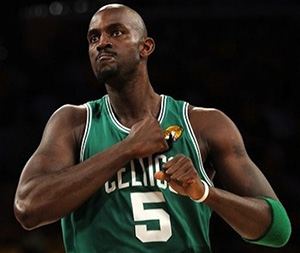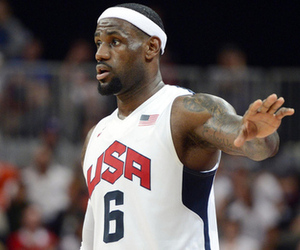 Like three to make two, the 10-second violation and low-top sneakers, the $30 million NBA player may become a thing of the past.
Like three to make two, the 10-second violation and low-top sneakers, the $30 million NBA player may become a thing of the past.
A handful of stars have approached and even crossed the magical monetary mountaintop, which is something when you consider that the collective bargaining agreement has a maximum salary restraint.
Michael Jordan – who else? – was the first player to make $30 million in one season, negotiating about an 800 percent raise after the 1995-96 season. That was Jordan’s first full campaign after returning from his first retirement, when he led the Chicago Bulls to a record 72 wins and was MVP of both the regular season and NBA Finals.
Jordan took a 10 percent raise to $33.14 million for the 1997-98 season, his last before retiring again. Since then, both Shaquille O’Neal and Kevin Garnett easily could have crossed the threshold had they not reworked their deals to take less money over more years.
O’Neal made $27.6 million in 2004-05, his first season with Miami. He had three years left on his existing deal with raises that would have taken him over $30 million in annual salary. But he agreed to knock his salary back to $20 million annually in a new five-year deal, creating the salary cap room for Pat Riley to add the pieces that helped the Heat win their first championship.
Garnett made a similar decision. He was at $28 million in the 2003-04 season, when he won MVP and led Minnesota to the Western Conference finals for the first time. To create cap room, he took a five-year, $100  million deal starting at $16 million with annual $2 million raises. That means Garnett took a $12 million pay cut after he won MVP.
million deal starting at $16 million with annual $2 million raises. That means Garnett took a $12 million pay cut after he won MVP.
Only one player has joined Jordan in the $30 million club – Kobe Bryant, who will make $30.45 million next season. It is the final year of his current deal and he almost certainly will spend a portion of it on the sidelines as he recovers from a torn Achilles tendon.
Could Bryant remain in the $30 million club? Of course. With 10-plus years in the league, Bryant is entitled to 35 percent of the salary cap or 105 percent of his previously salary. The latter option produces the higher number – nearly $32 million. And if Bryant signs a multiyear deal, ensuing seasons would allow for 7.5 percent raises should he remain with the Lakers.
But Bryant is 34, and next summer the Lakers will be trying to rebuild a championship contender almost from scratch. Giving upwards of $30 million to one player – no matter how good he is or what he has meant to the franchise – isn’t the smartest way to do that.
If he is willing, Bryant will likely take a 33 percent pay cut to about $20 million, which is the current going rate for veteran stars. That would give the Lakers the flexibility to add another $20 million player alongside Bryant, vaulting them right back into contention.
So after the 2013-14 season, will anyone ever make $30 million again? Perhaps, but it’s a long shot.
Carmelo Anthony’s current deal expires after the 2014-15 season, when he will be the highest-paid player at $23.53 million. At 31 years old, it is conceivable that he could command a five-year max deal from New York that would start at $24.7 million. Four annual raises of $1.85 million (7.5 percent) would push him over $30 million in the last year of the deal.
LeBron James’ current deal ends after the 2015-16 season, when he will make $22.11 million, also at 31 years  old. By re-signing with Miami for five years, James would barely clear $30 million in the final year of that contract.
old. By re-signing with Miami for five years, James would barely clear $30 million in the final year of that contract.
Dwight Howard’s new deal with Houston expires after the 2016-17 season, when he will make a league-high $23.41 million. Howard will be 32, but keep in mind that centers get paid. If Howard re-ups for a five-year max deal with the Rockets, he would also exceed $30 million in the 2021-22 season – when he is 37 years old.
However, if any of these three opt out early or change teams – knocking the annual raise down to 4.5 percent – a $30 million annual salary is out of reach.
Other possible eventual $30 million players include Kevin Durant ($20.16 million in 2015-16, when he is just 28), Derrick Rose ($21.32 million in 2016-17, also 28) and Blake Griffin ($21.37 million in 2017-18, also 28).
There are players other than these making more money, but they will be taking pay cuts in their next deal either due to age (Dwyane Wade, Chris Bosh, Chris Paul, Deron Williams) or the market correcting an absurd deal (Joe Johnson, Amar’e Stoudemire).
Keep in mind that these projections use the current CBA. It is likely that either the players or owners will opt out in 2017 to negotiate a new agreement. Contract length and annual percentage raises – the two biggest factors in salary escalation – have decreased in each of the last two agreements.
After the jump are lists of the top 10 player salaries in each of the next five seasons.